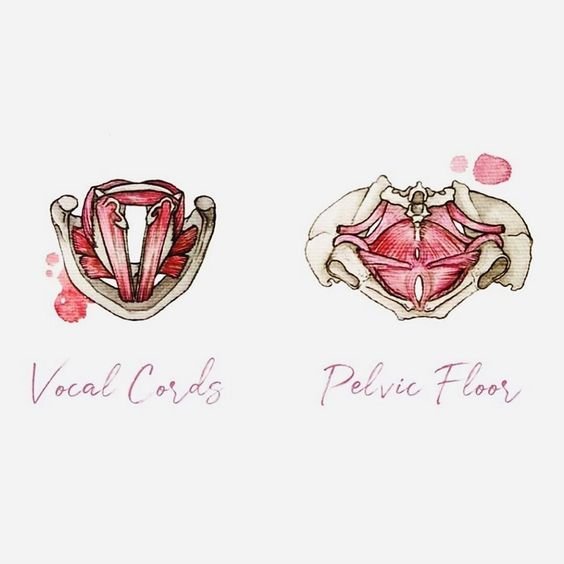How a Holistic Approach to Pregnancy Influences Positive Birth Experiences
Let's talk about the magic of a holistic approach to pregnancy and birth as well as how holistic practices influence positive birth experiences. This journey you're on—it's not just about the physical changes happening in your body. It's about the mental and emotional transformation, the deep connection with your baby, and the incredible power you hold within!
From the moment you see those two lines on the pregnancy test, it's a wild ride of emotions. Excitement, fear, joy, uncertainty—it's all part of the journey. But here's the thing: you're not alone. You have a tribe of women who have walked this path before you, and we're here to support you every step of the way!
Let's start with the power of mantras. These simple words hold so much weight! Your mindset sets the tone for everything, from those early days of pregnancy to the sacred moment you meet your baby for the first time. That's why we're all about using mantras to keep you feeling strong, empowered, and aligned with your divine purpose.
They align you with your inner strength and help you feel grounded and empowered. Whether it's a verse from the Bible or a personal affirmation, find what resonates with your soul and let it guide you through the ups and downs of pregnancy. You can even print them out and scatter them around your birthing space, reminding you of your inner strength and the power of your body!
Evidence-Backed Techniques: Enhancing Your Birth Experience with Science
Diving deeper into the scientific realm, let's explore evidence-backed techniques that enrich your birthing experience:
Breathing Techniques
The rhythmic inhales and exhales not only center you but also oxygenate your body, aiding in relaxation and pain management during labor!
Slow Breathing: Taking slow, deep breaths can help manage pain and reduce stress during labor. Studies have shown that slow breathing techniques can lead to lower levels of cortisol, the stress hormone, and increased feelings of relaxation and calmness.
Patterned Breathing: This involves establishing a rhythmic pattern of breathing, such as inhaling for a certain count and exhaling for a longer count. Research suggests that patterned breathing can help distract from pain sensations and improve overall coping during labor!
Paced Breathing: Paced breathing involves breathing at a controlled rate, often synchronized with contractions. Studies have found that paced breathing can help reduce the perception of pain and improve maternal comfort during labor.
Visualization Breathing: This technique involves using mental imagery while breathing to create a sense of relaxation and focus. Research has shown that visualization techniques can help decrease anxiety and increase feelings of control during labor.
Lamaze Breathing: Lamaze breathing techniques involve various patterns of breathing, such as slow breathing, patterned breathing, and paced breathing. Studies have demonstrated that Lamaze breathing can effectively reduce pain and improve maternal satisfaction during labor.
Breathing with Vocalization: Some women find relief by vocalizing during contractions, such as humming, chanting, or moaning. Research suggests that vocalization can help release tension, increase relaxation, and reduce the perception of pain during labor.
Breathing with Movement: Combining breathing techniques with movement, such as swaying, rocking, or walking, can help manage pain and promote comfort during labor. Studies have shown that movement-based breathing techniques can lead to improved labor outcomes and maternal satisfaction.
These breathing techniques are often taught in childbirth education classes and practiced during labor to help women cope with the intensity of contractions and promote a positive birth experience. It's essential for expectant mothers to explore different techniques and find what works best for them during labor!
TAYLORED Positions
Different phases of labor require specific positions to optimize comfort and progression. These positions align with the natural flow of labor, facilitating the birthing process. See more on the National Library of Medicines website and Cochran Library.
Early Labor (Latent Phase):
Resting: Resting is paramount during the early stages of labor. It allows the mother's body to conserve energy and prepare for the intense work ahead. Finding a comfortable resting position, such as lying down on the side or reclining with supportive pillows, can help ease discomfort and promote relaxation. Hydration is also essential during this time to maintain optimal hydration levels, support circulation, and ensure the body's well-being.
Walking: Walking can help promote relaxation, encourage pelvic movement, and facilitate early labor progression. It also allows the mother to maintain an upright position, which can help alleviate discomfort and encourage the baby to descend into the pelvis.
Standing Leaning Forward: Leaning forward while standing can help relieve pressure on the lower back and pelvis. This position encourages the baby to move into an optimal position for birth and can help reduce discomfort during early labor.
Sitting on a Birth Ball: Sitting on a birth ball provides gentle support and allows for pelvic movement. It can help alleviate pressure on the lower back and pelvis while promoting relaxation and comfort during early labor.
Active Labor (Active Phase):
Hands and Knees: Getting on hands and knees can help relieve back pain and encourage optimal fetal positioning. This position allows gravity to assist in the descent of the baby and can help open the pelvis for a smoother birth.
Squatting: Squatting opens the pelvic outlet and encourages the baby to descend further into the birth canal. It can help facilitate cervical dilation and promote efficient contractions during active labor.
Supported Leaning: Leaning forward onto a support, such as a birthing ball or a partner, can help relieve pressure on the spine and pelvis. This position allows for relaxation between contractions and encourages the baby's descent during active labor.
Transition Phase:
Side-Lying: Lying on one side can help promote relaxation and conserve energy during the intense contractions of the transition phase. This position allows for rest between contractions while still encouraging progress in labor.
Reclining with Elevated Hips: Reclining with the hips elevated, such as on a bed with pillows under the hips, can help open the pelvic inlet and encourage the baby's descent. This position provides comfort and support during the challenging transition phase.
Pushing Phase (Second Stage):
Squatting or Semi-Squatting: Squatting or semi-squatting allows for effective pushing by utilizing gravity to assist in the descent of the baby. This position opens the pelvic outlet and encourages efficient contractions during the pushing phase.
Hands and Knees or All Fours: Getting on hands and knees or all fours can help widen the pelvic outlet and provide optimal positioning for pushing. This position also allows for flexibility and mobility during the pushing phase.
Upright Positions: Upright positions, such as standing, kneeling, or using a birthing stool, can facilitate effective pushing by utilizing gravity. These positions encourage the baby's descent and promote a smoother birth experience.
Encouraging expectant mothers to explore and practice these Taylored positions during labor can help optimize comfort, progression, and overall satisfaction with the birthing process. It's essential to discuss these options with a healthcare provider or doula and consider individual preferences and needs during labor!
Water Births
Research supports the calming and peaceful effects of water births, reducing stress and enhancing the birthing experience for both mother and baby. Water births offer a range of benefits for both mother and baby.
Immersion in warm water during labor provides natural pain relief, easing the intensity of contractions and promoting relaxation. This can lead to a reduction in the risk of tearing, as the warm water helps soften the perineum.
Additionally, water births allow for increased mobility and freedom of movement, enabling mothers to find comfortable positions easily. The calming environment created by water immersion reduces anxiety and promotes a sense of well-being during labor and delivery. For babies, being born in water provides a gentle transition from the womb to the outside world, fostering bonding and emotional connection. Furthermore, water births are associated with a reduced need for medical interventions, leading to a more natural and empowering birth experience overall. See more on water births on NIH’s website!
More Holistic Approachs To Pregnancy
Acupressure, Acupuncture, and Massage: Targeted techniques can alleviate pressure, release tension, and support the baby's descent with ease, offering comfort during labor.
Music Therapy: Crafting a birthing playlist with soothing melodies can create a harmonious atmosphere, easing anxiety and fostering relaxation during labor.
Birthing Tools: Utilizing birthing balls and combs can provide physical support, aid in relaxation, and enhance comfort during labor.
Aromatherapy: Infusing your birthing space with soothing scents can create a calming ambiance, promoting relaxation and a sense of well-being during labor.
Childbirth Classes: Childbirth classes serve as an invaluable resource in your holistic approach to pregnancy, offering essential knowledge and techniques to empower you through a positive birth experience.
Honoring Your Body's Innate Strength
But here's the real secret, mama: it's all about going internal. Shutting out the noise of the world and listening to the wisdom of your body. Your body was made for this, and you have everything you need within you to bring your baby into this world with strength and grace!
And let's not forget about the power of your voice. Those primal sounds you make during labor? They're not just noise—they're your body's way of releasing tension and helping your baby descend. So don't be afraid to let go and trust in the process. See more on vocal toning here.
Via the Loctus Womb
Building Your Birth Team with Holistic Practices
As you journey into motherhood, educate yourself, build your tribe, and welcome the support of a doula. Take the reins of your birth experience, steering clear of fear and uncertainty. Holistic practices are your compass toward empowerment and a trauma-free birth. At the end of the day, it's all about embracing the journey with intention and presence.
Trusting Your Journey: Finding Strength and Support in Holistic Care
Incorporating holistic practices into birth preparation empowers you to take control of your birthing experiences and avoid feeling like you're on “autopilot” or merely "getting through" the process. By educating yourself, building a supportive birth team, and embracing holistic approaches such as having a doula, you can reclaim your power and ensure that you remain in the driver's seat throughout labor and delivery. This proactive approach not only reduces the risk of birth trauma but also fosters a sense of empowerment, allowing mamas to navigate childbirth with confidence and autonomy.
So, mama, as you navigate the highs and lows of pregnancy and birth, remember this: you are strong, you are capable, and you are loved! Trust in yourself, trust in your body, and know that you have a tribe of women cheering you on every step of the way.
Booking Your San Diego County Doula
Ready to start your journey to a positive and empowering birth experience? Let's partner together to ensure that your pregnancy, labor, and delivery are filled with love, support, and holistic care. Book me as your trusted San Diego County doula and let's create the birthing experience you deserve!
Evidence-Based Articles for Holistic Approaches to Pregnancy
Breathing and Mindfulness Techniques:
https://www.cochranelibrary.com/cdsr/doi/10.1002/14651858.CD009514.pub2/full
https://www.ncbi.nlm.nih.gov/pmc/articles/PMC9675115/
https://www.ncbi.nlm.nih.gov/pmc/articles/PMC9822559/
https://www.sciencedirect.com/science/article/abs/pii/S1744388117304097
Water Births:
https://www.cochranelibrary.com/cdsr/doi/10.1002/14651858.CD000111.pub4/full
https://www.ncbi.nlm.nih.gov/pmc/articles/PMC10226235/
https://evidencebasedbirth.com/waterbirth/
Taylored Positions:
https://www.cochranelibrary.com/cdsr/doi/10.1002/14651858.CD003934.pub2/full
https://www.ncbi.nlm.nih.gov/pmc/articles/PMC6839002/
https://evidencebasedbirth.com/evidence-birthing-positions/
Childbirth Classes in San Diego County:
















